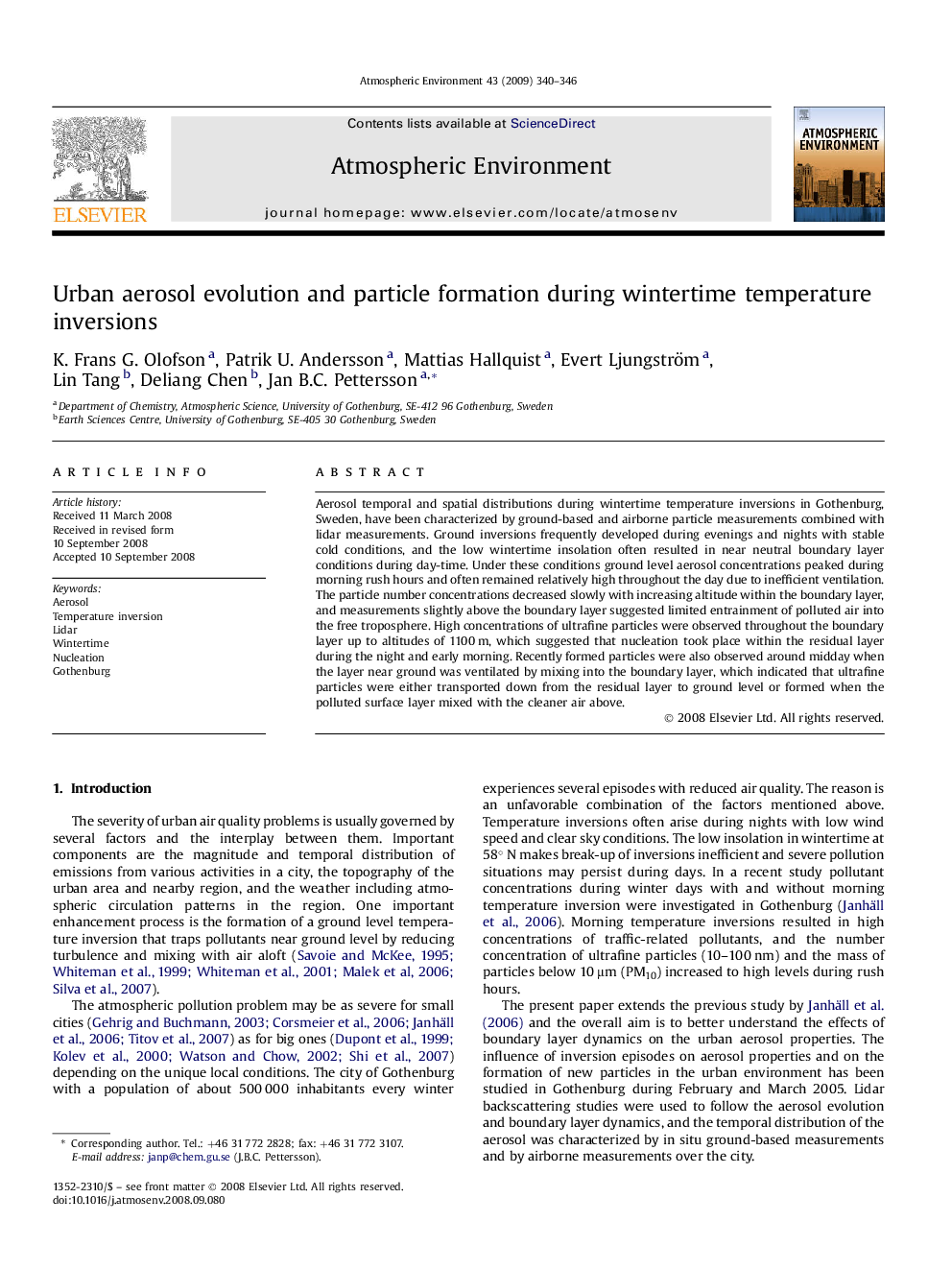| Article ID | Journal | Published Year | Pages | File Type |
|---|---|---|---|---|
| 4441270 | Atmospheric Environment | 2009 | 7 Pages |
Aerosol temporal and spatial distributions during wintertime temperature inversions in Gothenburg, Sweden, have been characterized by ground-based and airborne particle measurements combined with lidar measurements. Ground inversions frequently developed during evenings and nights with stable cold conditions, and the low wintertime insolation often resulted in near neutral boundary layer conditions during day-time. Under these conditions ground level aerosol concentrations peaked during morning rush hours and often remained relatively high throughout the day due to inefficient ventilation. The particle number concentrations decreased slowly with increasing altitude within the boundary layer, and measurements slightly above the boundary layer suggested limited entrainment of polluted air into the free troposphere. High concentrations of ultrafine particles were observed throughout the boundary layer up to altitudes of 1100 m, which suggested that nucleation took place within the residual layer during the night and early morning. Recently formed particles were also observed around midday when the layer near ground was ventilated by mixing into the boundary layer, which indicated that ultrafine particles were either transported down from the residual layer to ground level or formed when the polluted surface layer mixed with the cleaner air above.
